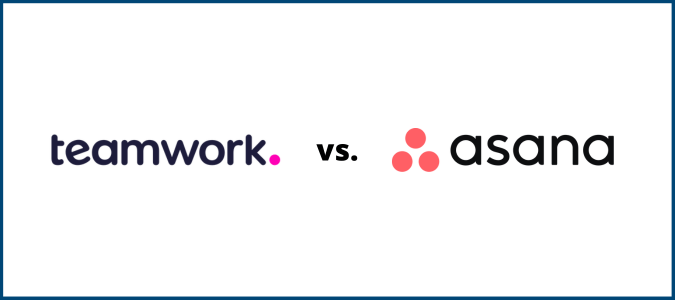Jira Software and Wrike are two popular and reputable project management solutions. While both tools are great, they’re very different from each other. Jira Software is specifically designed for agile software development teams, whereas Wrike’s versatility makes it better for managing multiple projects related to marketing, creative assets, and client work.
With Jira Software, your development team can use scrum boards, Kanban boards, and DevOps templates to manage the entire software development lifecycle. The tool comes with bug-tracking features and even supports ITSM for issue-tracking post-launch. Jira Software is always free for up to ten users; larger teams can try it free for seven days.
Wrike is a bit more versatile and suitable for non-technical teams. It can give you complete visibility into your projects, resources, and workflows. Wrike is also a great option for managing projects for your clients, as it has built-in features for proofing, approvals, and tracking billable hours. Try Wrike free for two weeks—no credit card required.

Jira Software and Wrike Compared to the Best Project Management Software
While Jira Software and Wrike are both great, neither made our list of the best project management software. Our Golden Eggs below are the top-recommended options that we’ve identified in this category:
Monday.com is a customizable and easy-to-use tool that’s feature packed and integrates with all of your favorite business tools. You can try Monday.com for free with a 14-day trial.
ClickUp is perfect if you’re managing remote teams, as it has everything your team needs to collaborate and track project tasks. Sign up for free today.
Smartsheet works best if you’re outgrowing basic spreadsheets for project management but still want to stick with the spreadsheet-style formats you’re familiar with. Start your 30-day free trial today.
Jira Software Compared to Wrike
Jira Software and Wrike each uniquely address different types of projects and teams. As you compare the features side-by-side, you’ll see that they’re clearly designed for different use cases. Continue below to further understand these differences.
Jira Software Highlights
Jira Software is built with software development in mind—specifically agile development teams. It includes everything you need to create user stories and plan upcoming sprints. Developers can use Jira Software to manage backlogs, and project managers can use it to see the big-picture progress of tasks in progress.
Jira Software excels in its ability to manage software projects both prior to and after launch. For example, it has built-in bug tracking and integrates with development tools so you can quickly identify problems and ensure new issues are prioritized accordingly.
You can also use Jira Software to sync your DevOps and IT teams with IT service management. This makes it easier for your team to manage bugs and updates after the software goes live. Overall, it helps boost developer productivity during development cycles, so your team can focus more on code instead of manually tracking and updating issues.
Wrike Highlights
With Wrike, you’ll have access to all the tools you’d expect in a project management solution. The software comes with Kanban boards, Gantt charts, and customizable dashboards to view the big-picture overview of single projects and multiple projects simultaneously.
You can easily use Wrike to manage tasks and track milestones across different departments. For example, you might have an upcoming event for which a specific group of 12 employees is preparing. But you might also have ongoing content creation needs for marketing and internal projects across different departments to manage. Wrike allows you to look at each project at a granular level but also supports project portfolio management.
Another unique standout of Wrike is its ability to support client work. If you’re running an agency, you can easily manage all your clients and deliverables through a single source of truth across multiple project boards. The platform even comes with features to optimize resource allocation and track billable hours. This helps ensure nobody on your team is overloaded, and you won’t need a third-party tool to track your time on projects.
Jira Software vs. Wrike: Pros and Cons
Our team conducted extensive research using real user reviews to identify the strengths and weaknesses of these tools. Throughout our research, we narrowed down some common trends and customer sentiments related to both Jira Software and Wrike. This includes how businesses are actually using the tools and what they think about specific features.
Where Jira Software Shines

End-to-end Agile Development: Your agile team can use Jira Software to manage every part of the software development life cycle. It has everything you need to plan sprints, manage scrum boards, and properly set up your epics. Your entire team will always be able to see the project’s trajectory and where things stand as they’re progressing through tasks.
Ticket management at scale: Ticketing is a natural part of software development. Whether it’s a feature request or a bug fix, Jira Software makes it easy for project managers and developers to manage all of your tickets at scale. You can easily identify which tickets are the highest priority and then break down larger, complex tasks into smaller tasks. It’s also easy to collaborate with team members and link associated issues together.
DevOps integrations: You can integrate Jira Software with development tools like GitHub, GitLab, and Bitbucket. These integrations reduce the need for your developers to constantly switch screens when they’re working through code. For example, you can view your Jira Software issues directly from Bitbucket and see all of the comments and attachments from there as well. For project managers and team leads, you can use Jira Software to automatically see what code repositories your team is being worked on across GitHub or GitLab.
Automated and customizable workflows: Jira Software works well if you want to set up custom triggers within the software. So your team can spend more time focusing on tasks and less time on administrative tasks. All of this can be managed through a drag-and-drop workflow automation builder using simple “when, if, then” logic. For example, if an issue is raised, it can be auto-assigned to someone on the team, or when an epic is completed, all of the corresponding stories can also be marked as done.
Comprehensive reporting: As a project manager, Jira Software gives you detailed insights and analytics to track how your team is performing. It can also help you manage your resources effectively as you’re planning upcoming sprints and trying to set reasonable expectations for any stakeholders involved in the project.
Where Jira Software Falls Short
Confusing product suite: Jira Software is specifically designed for project and issue tracking. But it isn’t truly an all-in-one solution on its own. Atlassian, the software company that developed Jira Software, has other tools for content collaboration, ITSM, and visual project management. Your development team may also choose to set up Confluence for collaboration and Jira Service Management for ITSM, for example. The initial setup and deployment of the product suite, as well as deciding which products to use, can be a bit confusing.
Steep learning curve: While Jira Software’s user interface is fairly straightforward, the tool isn’t very beginner-friendly. Fortunately, many people throughout the development community have experience using Jira Software. But if your team is new to Jira Software and has no prior experience, you can expect some growing pains in the first few weeks or months.
Product-based pricing structure: Small teams can start out paying very little for Jira Software if Jira Software is the only product they need. But as teams scale and needs increase, you may need other tools within the Atlassian suite, and each of those tools has its own pricing. Other project management tools, including Wrike, include these types of features within a single software subscription. But with Jira Software, you’ll need to purchase separate products—and pay for them individually.
Where Wrike Shines

One tool for all departments: One of the best parts about Wrike is its versatility. You can use it for managing company-wide initiatives and department-specific projects within marketing, product management, operations, and more. For example, you can set up a general marketing board with a big-picture view of all your marketing objectives and then have breakout boards for specific projects. You can also have a separate area where you manage internal day-to-day IT or operational tasks.
Great for client projects: If you’re running an agency or professional services organization, Wrike makes it easy to separate internal projects from client work. With your client projects, you can invite stakeholders as guest collaborators so they can see what’s happening with the project in real-time. You can also use Wrike to set up approvals and guest approval flows, so your clients can provide feedback and sign off on deliverables with ease. This type of transparency helps you increase client retention and satisfaction.
Advanced resource planning: With Wrike, you can easily identify high-priority tasks to ensure your team is aligned on what needs to happen and when it needs to happen. The software also has advanced resource allocation and reporting tools, so know which team members have the needed capacity and which ones might be overburdened. You can also use Wrike to anticipate resource demands in advance based on everyone’s workload to ensure you don’t fall behind schedule.
Simple templates: Wrike has virtually no learning curve, which makes it a great option for beginners and non-technical users. To get started, select a template that best fits your goal, department, or initiative. These templates are designed to help you hit the ground running, so you don’t have to waste time trying to organize boards or workflows.
Cross-tagging feature: If you’re using Wrike for multiple departments, you can increase visibility across teams with cross-tagging. So each team can see a task or goal within the context of their own department. For example, let’s say your marketing team needs to get a creative asset from a design team. Rather than creating multiple tasks on each board, both teams can manage a single task using their own workflows, and everyone can collaborate on a single card.
Where Wrike Falls Short
Lacks development integrations: Wrike does have templates for agile software development. But beyond its ability to manage sprints and track tasks, it doesn’t integrate with your code repositories. Compared with Jira Software, Wrike’s usability for software teams isn’t on the same level.
Potential need for subtasks: Depending on how your team likes to organize projects, Wrike’s setup might force you to create lots of subtasks along with each task. For example, let’s say you want different team members to own different parts of a task with separate due dates. The only way to do this is by creating multiple subtasks, which can be a bit more cumbersome and harder to track at scale.
Limited Zapier integration: Zapier helps extend the functionality of different business tools through automations and workflows. But when you integrate Wrike with Zapier, you’ll notice that the options are fairly limited. The possibilities just aren’t quite the same, especially if you’re used to using Zapier to extend other tools.
The Last Word on Jira Software Compared to Wrike
Jira Software and Wrike are two solid project management options to consider. Jira Software shines for its ability to streamline software development projects, and Wrike works best for cross-department projects and managing client work.
With Jira Software, you truly can manage the full lifecycle of software projects, including ticket management. While Jira Software is great for integrations with your code repositories, it’s a complex tool that may require some add-ons to get the most out of it. Wrike’s versatility makes it a great choice for organizations that want one tool to manage all projects across different teams. You can use it to plan resources and manage approvals from stakeholders, but it’s not really a viable option for software teams.
If you’re still on the fence about whether to choose Jira Software or Wrike, you can read our reviews of the best project management software to see some alternative options. So whether you need something basic for a small team, an enterprise-grade solution, or something in between, we have a recommendation for you on that list.















